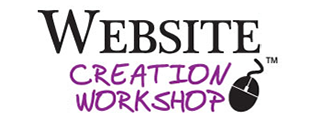One of the questions I often hear is, “What is CSS, Christina? Is it like HTML? Do I need to know CSS or HTML for my WordPress site?” CSS stands for Cascading Style Sheets, a term you may hear if you talk with web designers or programmers. All the acronyms in the world of websites can be confusing but keep reading, and I’ll explain the terms in simple language for you.
And there’s good news! You don’t need to know CSS if you use a well-designed WordPress theme (like Divi). In my Website Creation Workshop, I typically don’t spend a lot of time teaching coding. You can create a beautiful WordPress site without knowing how to write HTML or CSS code. However, it may be helpful if you have a basic understanding of what that code does.
Because at some point, you may want to do something very specific on your WordPress website that may require additional CSS. You contact your theme company, which gives you the CSS code for your site. The key for the non-techie entrepreneur using WordPress is to embrace the freedom of not knowing much about coding languages but to understand how to copy and paste code into your website if needed.
Before we dive into this, let’s talk a little about HTML – a term that you may have heard and may be more familiar to you.
The Difference Between CSS and HTML:
HTML (HyperText Markup Language) is the building block of web pages. It’s used to structure a webpage so your browser can read it. WordPress displays your site in HTML, so you are actually reading this blog post in HTML.
Think of your website as a house. HTML is the framework of your house. A house comprises different rooms, with different furniture in each room. In your website, there are different sections (header, footer, sidebar, etc.) and different content elements in each section. HTML allows you to combine images, videos, text, links, and other content elements to form a website. You can read the technical definition of HTML here.
But having only the framework of a house does not make it attractive and beautiful. What do you do after you build a house? You decorate it! You pick out paint colors, art, flooring, and light fixtures. That’s where CSS comes in.
CSS (Cascading Style Sheets) is the markup language to decorate your HTML web pages. CSS code dictates your website’s visual look and style – the size, fonts, colors, spacing, layout, and animation. Web designers use CSS to change the look of a website without having to touch the content itself. You can read the technical definition here if you really want to.
If you use WordPress, you may think, “That sure sounds like what WordPress themes do.” You’re right! WordPress themes’ main job is to control the look of a website… and it does this using CSS.
Add Any Code to the Customizer
With all the amazing WordPress themes available, you may never need to add CSS code to your website. Some people insert CSS code if they cannot achieve a certain desired effect with the theme’s built-in options. Most WordPress themes offer extra places to add custom CSS codes at various levels. You can find a custom CSS area in the WordPress admin panel Customizer. See the screenshot below:

Again, it’s good to have a basic understanding of the terms HTML and CSS, but there is no need to be proficient in it if you are a WordPress end user. You’ll find more than enough design options already offered within popular WordPress themes. The great thing about WordPress is that you can spend your time creating content instead of writing code.


































Apparently you do need proficiency, though. I understand that centered text is not longer supported in HTML5, and so must be handled with CSS. Annoying, when you’ve got space on someone’s site (author page on Amazon, for example) where you can use HTML–but I don’t think you can add CSS.
Why so much basic function is getting handed off to CSS–to continue your analogy, it’s like deciding load-bearing interior walls are “decoration” rather than “structure”!
Wendy
then pick a better theme that does not require so much css. And in terms of Amazon author pages, well that’s Amazon!
As a non-techie, I’m grateful to have been able to create two websites in your courses without writing and html or CSS codes.
Along the way, I’ve learned a few html codes, which is fun I admit. But I’m glad I don’t need coding on a daily basis to expand my websites.
Thanks once again, Christina, for making the technical side of website-building very clear!
Sally, Thanks again for that great testimonial! Yes I don’t like to bother with CSS either 😉